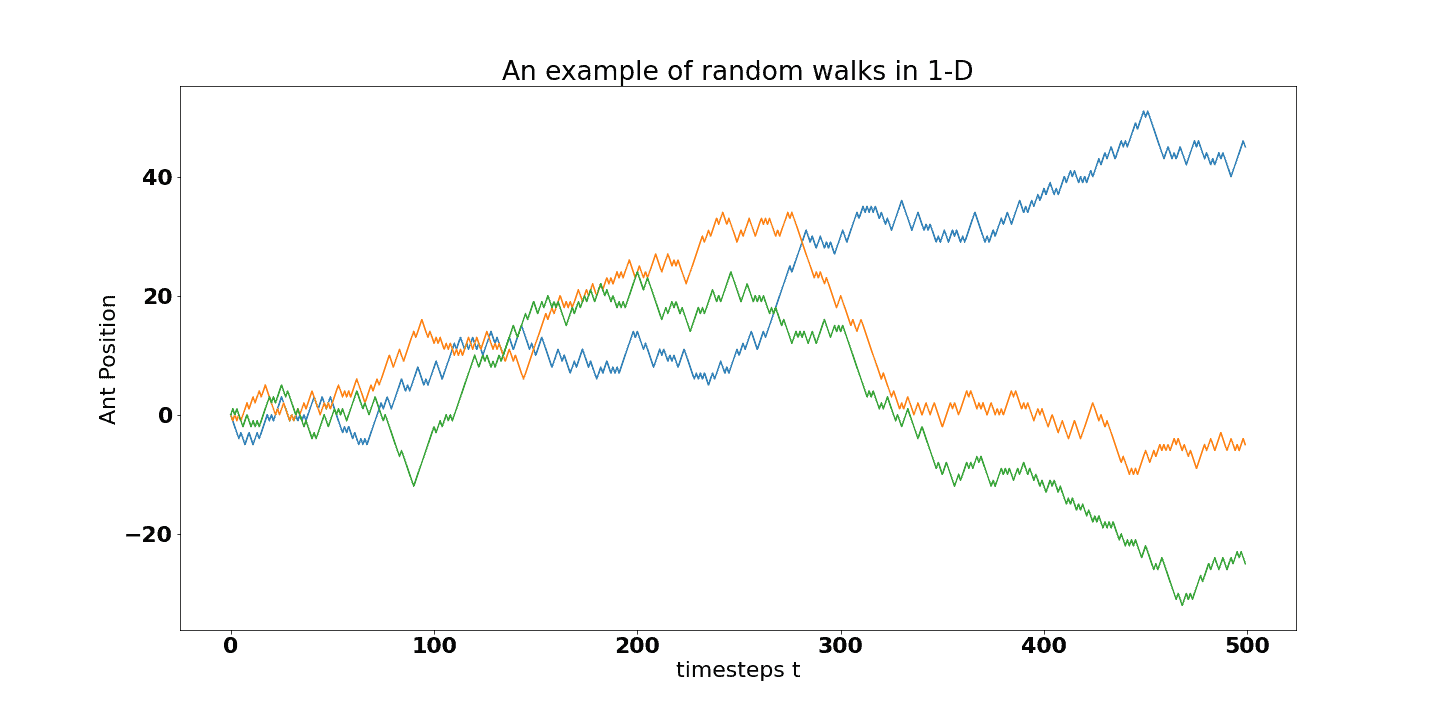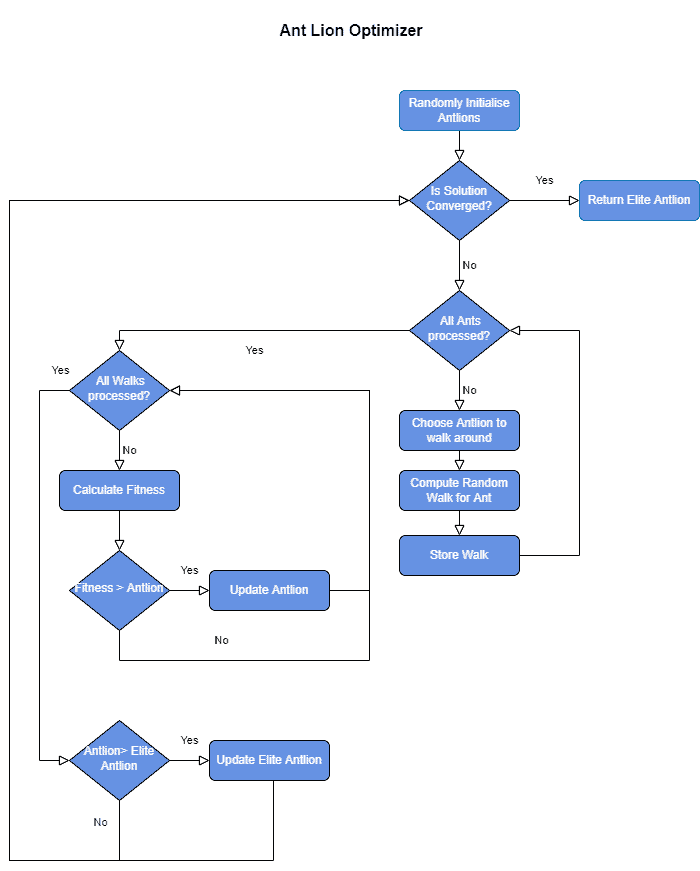1. 算法概述
蚁狮优化算法(Ant Lion Optimizer, ALO) 是一种受自然界启发的元启发式优化算法,灵感来源于蚁狮捕食蚂蚁的行为。它是一种基于种群的算法,适用于解决复杂的优化问题。
在算法中,蚁狮代表潜在的解决方案,而蚂蚁则作为探索者,通过随机游走寻找更优解。蚁狮通过模拟“陷阱”影响蚂蚁的移动路径,从而逐步逼近最优解。
2. 模型构建
2.1 蚂蚁的建模
蚂蚁是探索空间的“搜索代理”,通过随机游走(Random Walk)在解空间中移动。蚂蚁的移动路径会受到蚁狮陷阱的影响。
随机游走公式如下:
(1)
其中 cumsum 表示累计求和函数,r(t) 是一个随机函数:
(2)
rand 是从 [0,1] 均匀分布中采样的随机数。
下图展示了三条一维随机游走路径,可以看出蚂蚁在解空间中具有良好的探索能力:

2.2 蚁狮的建模
蚁狮代表当前的最优解或候选解,它们通过“陷阱”影响蚂蚁的移动路径。蚁狮的位置更新依赖于蚂蚁的随机游走结果。
蚂蚁的随机游走受蚁狮陷阱的影响,其归一化位置计算如下:
(3)
其中:
a_i:第 i 维的最小随机游走值b_i:第 i 维的最大随机游走值c_i^t和d_i^t:受蚁狮影响的归一化边界
(4)
(5)
为了模拟陷阱的“捕获”效果,边界会随时间缩小:
(6)
(7)
其中 Z = 10^w * (t / T),w 是一个控制探索与开发平衡的常数。
2.3 捕获蚂蚁
当蚂蚁进入陷阱后,其移动范围被逐渐缩小,模拟蚁狮“吸引”蚂蚁向陷阱中心移动的过程。
为增强算法的全局搜索能力,引入精英机制(Elitism),即记录当前最优蚁狮,并让蚂蚁在其周围和随机选择的蚁狮周围进行随机游走,并取平均值。
3. 算法流程图
下图展示了 ALO 的整体流程:

流程说明:
- 初始化蚁狮种群
- 对每只蚂蚁执行随机游走
- 更新蚁狮位置
- 更新精英蚁狮
- 检查终止条件(如最大迭代次数)
4. 算法实现步骤
- 初始化种群:随机生成蚁狮和蚂蚁的初始位置
- 蚂蚁随机游走:在蚁狮陷阱范围内进行随机游走
- 更新陷阱边界:随时间缩小陷阱范围,提高局部开发能力
- 更新蚁狮位置:如果蚂蚁比对应蚁狮更优,则更新蚁狮位置
- 更新精英蚁狮:保持当前最优解参与后续搜索
- 重复迭代直到满足终止条件
5. 示例演示
下图展示了一个蚂蚁在蚁狮陷阱内的随机游走过程:

图中:
- 红色区域:蚁狮陷阱范围
- 黑色点:蚁狮当前位置
- 浅蓝色点:蚂蚁走过的路径
- 深蓝色点:本次迭代终点
如果蚂蚁最终位置优于当前蚁狮,则蚁狮更新自身位置并调整陷阱范围。
6. 总结与优势
✅ 优势:
- 随机游走带来良好的全局探索能力
- 种群机制避免陷入局部最优
- 蚁狮陷阱机制增强局部开发
- 算法参数少,易于实现
❌ 局限:
- 在高维问题中收敛速度可能变慢
- 精英机制可能影响多样性
⚠️ 适用场景:
- 黑盒优化问题
- 无需梯度信息的优化场景
- 多目标优化(可扩展)
ALO 是一种简单、高效、无需梯度的优化方法,适合用于解决各种复杂的优化问题。它与灰狼优化(GWO)、飞蛾火焰优化(MFO)等算法共同构成了现代智能优化算法的重要组成部分。